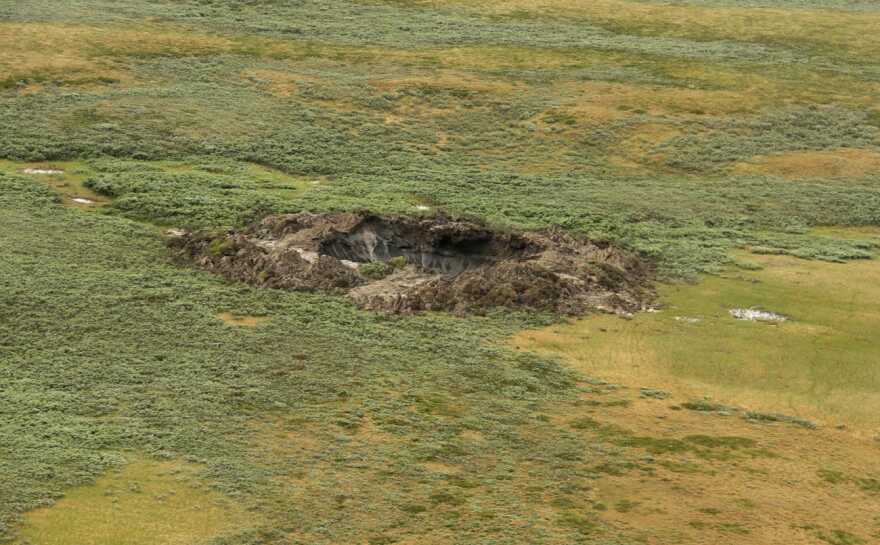In July of 2014, images of an enormous crater in the Siberian tundra captivated scientists and the public, alike. Others were soon found, and a cause proposed: climate change. Specifically, the finger was pointed at an underground build-up of methane released as permafrost thaws. But this was not a climate change impact that anyone had anticipated.
When the news broke, climate scientist Sue Natali of Woods Hole Research Center was at a remote field station in Alaska, on the other side of the Arctic. At first, she wasn’t sure whether the photos were even real.
"I didn't expect it then, and I still don't expect it now,” said Natali. “It's not something that any Arctic scientists talk about for this to happen on land - to have land explode because of a buildup of methane below the ground. It still surprises me now."
But now, Natali knows the craters are a real – if poorly understood – phenomenon, and she wants to know more.
To date, several have been found in one area of Siberia. They are associated with unusually warm summers, and they form over the span of a couple of years, starting with a hump that expands upward from the ground.
“It looks like what people call pingo, which is sort of just a large hill on the ground in the Arctic that's usually filled with ice,” Natali explained. “That hump explodes. It forms a very large hole in the ground. And then by the next year, that hole can fill with water and it can look like another lake.”
Still, Natali says there are more unanswered questions: How many are there? Do they form anywhere permafrost thaws, or only in certain areas?
To answer those questions, Natali has teamed up with geospatial analyst Greg Fiske, also at Woods Hole Research Center. The plan is to mine a new, high-resolution elevation data and satellite imagery made available by University of Minnesota’s Polar Geospatial Center. Fiske says they will digest the data in waves.
“In the first series, we analyze this elevation dataset. And then we can start to roll in other filters - vegetation change dataset - to see if things have gone from a vegetated area to water, for example,” Fiske explained. “And then we can actually start to do some three-dimensional modeling, as well.”
Fiske hopes to have initial results within a year or so, but says the project will continue and expand to cover a broader area, perhaps eventually the entire Arctic. And Fiske says the dataset and the methods might also be useful for looking at other climate change impacts in the Arctic, like shoreline erosion.
For Natali, learning more about these craters is part of understanding how the planet is responding to rapidly increasing greenhouse gas levels, and getting more information about abrupt climate change impacts into the computer models used to project future scenarios.
But she says the craters – how unexpected they were, and how little we know about them five years after their discovery – highlights the unprecedented pace of changes taking place.
“It doesn't surprise me that there [are] changes that are happening in the earth system that we didn't know, because we've never experienced this rate of change,” Natali said. “The ice sheets are melting faster than we expected. These processes that are happening with permafrost, they're happening faster than we expected.”




